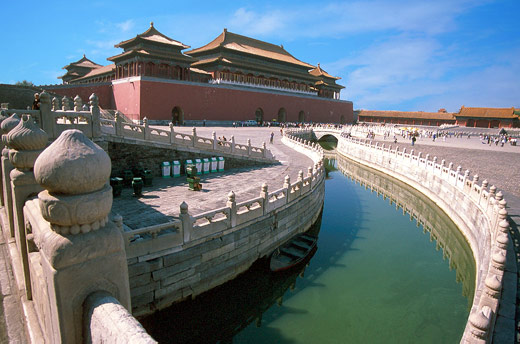
The Forbidden City was built nearly 500 years ago. It was aptly named as no commoner was allowed near it and the emperor who ruled within the strong walls of this huge place rarely ventured out. The construction of this grand structure began in 1407 and by 1420 it was complete by over a million workers and thousands of artisans. The complex served as a residence to 24 Qing and Ming Dynasty rulers; with the last Emperor being evicted out in 1924.
The Forbidden City was a fantasy in those days and even today is an enigma. Even today the walls seem to whisper the conspiracies they had seen, the secrets they had heard and the passion they had witnessed.
The Chinese left no stone unturned in beautifying the place. The rectangular structure has a gate on each side. White marble was used in its construction and the walls were made of terra cotta, as yellow was the color of royalty, yellow glazed tiles were used for roofs. Even the decorations were painted in yellow. The outer brick red wall is extremely strong and angular (it is broad at the base and becomes narrow at the top) making it practically impossible to climb. The palace was further protected by a moat six feet deep. The complex had two sections; the Southern Section which was the outer court from where the Emperor conducted the affairs of the country and the Northern Section where he lived with his family.
Though the whole place is quite amazing but some sections you should not miss are the Hall of Supreme Harmony, the Dragon Throne and the Treasure Gallery. The Hall is grandeur and splendor personified and all the important ceremonies such as the crowning of the new Emperor, royal weddings, royal birthdays and festivals were celebrated here. The Emperor also received dignitaries in this Hall. The Hall was quite tall and symbolized royal supremacy. No building was allowed to be higher than the Hall. The Treasure Gallery comprises of three halls and showcases the items of daily use in the Royal Household.
The Forbidden City is a prime example of Chinese architecture. It was included in the list of UNESCO's World Heritage Cultural Site in 1987 and is now the Palace Museum. Every year it attracts thousands of tourists.

























